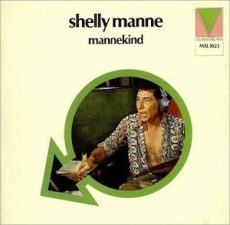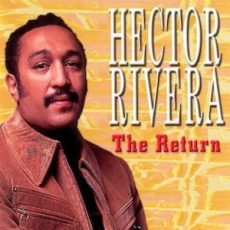
Daily Dose Of Jazz…
Niels Hartvig Foss was born on January 28, 1916 in Copenhagen, Denmark. He began playing guitar and from 1933 to 1934 began performing with the Svend Asmussen Group. He went on to play bass with Asmussen and others.
From 1940 to 1948 Niels led and played trombone in orxhestras and bands he formed. In 1949 for the next two years he performed with Peter Rasmussen and in 1957 moved to Switzerland where he continued to play part-time.
Over the course of his career Foss was a member of All Danish Starband, Etly Lizette And Her Orchestra, Kai Ewans Og Hans Orkester, Kaj Timmermann’s Septet, The Kordt Sisters Med Swingtet, and The Swingin’ Birds. He recorded for Odeon, His Master’s Voice, Imperial record labels.
Bassist, trombonist and guitarist Niels Foss died on May 16, 2018.
More Posts: bass,guitar,history,instrumental,jazz,music,trombone

Daily Dose Of Jazz…
Jeffry Castleman was born January 27, 1946 in Los Angeles, California. Active from the late 1960s to 1980s and was known for his work with Duke Ellington between 1967 to 1969. He also worked with Frank Sinatra, Bob Hope, Johnny Hodges and toured with Don Ho.
In the late 1980s he relocated to Brooklyn Park Minnesota to run the family liquor store business. For a short time he was an art framer before taking aposition as a piano salesman at Schmitt Music in Minnetonka, Minnesota.
Leaving all forms of employment, bassist Jeff Castleman is now retired at 79.
More Posts: bass,history,instrumental,jazz,music

Requisites
Generation ~ Dexter Gordon | By Eddie Carter
Dexter Gordon, a tenor saxophonist who has always held a special place in my heart growing up, is the focus of this morning’s spotlight with his album Generation (Prestige P-10069). As a teenager, I was fortunate to witness his live performance at the 1972 Newport Jazz Festival in a fantastic jam session. This 1973 release, his eleventh with Prestige, is a reunion with Freddie Hubbard, who previously collaborated with Dexter on Doin’ Allright and Clubhouse. Freddie plays flugelhorn (tracks: A2, B1) and trumpet (A1, B2) on the album. The rhythm section, consisting of Cedar Walton on piano, Buster Williams on bass, and Billy Higgins on drums, is equally impressive. My copy is the original U.S. Stereo release.
The album opens with the first version of Milestones by Miles Davis, setting the tone with a slightly slower groove for the theme. Dexter’s opening solo is immediately captivating, and then Freddie takes over the spotlight for an inspired improvisation. Cedar follows with a well-crafted statement, and Buster contributes a final shining moment before the theme’s reprise and climax. Scared To Be Alone by André Previn is up next. Dexter and the trio initiate the first chorus of the melody, then are accompanied by Freddie to complete the theme. Dexter’s tender and gentle solo paves the way, and Freddie’s luxuriously elegant flugelhorn conveys deep emotion. Buster’s brief reading before the theme concludes touchingly provides the perfect ending to this beautiful ballad.
We See by Thelonious Monk changes the pace with a lively start to the second side. Billy’s rhythmic introduction sets the stage for the quintet’s medium-tempo melody. Dexter demonstrates his skill and precision in a delightful opening solo, followed by Freddie, whose performance displays a dazzling tone. Cedar shines in a well-crafted statement next, while Buster comfortably strolls into the ensemble’s ending theme. The Group by Dexter Gordon wraps up the session with a lively melody led by the front line. Dexter opens the solos buoyantly; then Freddie takes over with a marvelously executed statement. Cedar moves efficiently and effectively next, with Billy adding a final comment during the closing chorus.
Generation was produced by Ozzie Cadena and recorded by Rudy Van Gelder, whose expertise behind the dials ensures an exceptional soundstage. The record’s sound quality is superb; the instruments are incredibly clear, emerging from your speakers with remarkable fidelity. For tenor sax enthusiasts, this hard-bop album certainly deserves a spot in any jazz library. The next time you’re at your favorite record store, be sure to check out Generation by Dexter Gordon. It’s a hidden gem from one of jazz’s most significant musicians, and despite being lesser known in his discography, acquiring it won’t break the bank!
~ Milestones – Source: JazzStandards.com © 2025 by Edward Thomas CarterMore Posts: choice,classic,collectible,collector,history,instrumental,jazz,music,saxophone

Daily Dose Of Jazz…
Hector Rivera was born on January 26, 1933 in New York, New York. He had been playing for over a decade, beginning in the early 1950s when he joined the band of Elmo Garcia as a teenager. Making his recorded debut as a bandleader in 1957 when Garcia didn’t have enough material prepared, Mercury Records asked if he had any music. Wanting to record a solo album Mercury offered to record him as a solo artist, issuing his debut, Let’s Cha Cha Cha.
Over the next few years, Rivera would be known mostly as a sideman to bandleaders Joe Cuba, Pacheco, and vocalist Vincento Valdez. He made his biggest splash as a bandleader with the 1966 album At the Party, with a large band featuring several trumpet players and percussionists, as well as bassist Cachao.
Dividing his approach between instrumentals and vocals, he employed several singers, including David Coleman who is most heard on the At the Party album. The success of the title cut enabled Hector to cut several more albums, along with continuing to write and arrange. He would go on to participate in projects for Ray Barretto, Machito, and Tito Puente among others.
Pianist, arranger, composer, bandleader and producer Hector Rivera who was one of the more renowned performers of the Latin soul genre, died on January 8, 2006 in his hometown.
More Posts: arranger,bandleader,composer,history,instrumental,jazz,keyboard,music,piano

Daily Dose Of Jazz…
Wellman Braud was born on January 25, 1891 in St. James Parish, Louisiana and settled in New Orleans, Louisiana. In his early teens he was playing the violin and the upright bass and leading a trio in venues in the Storyville District before 1910.
Moving to Chicago, Illinois in 1917 by 1923 he was performing in London, England with the Plantation Orchestra, doubling on bass and trombone. His next move was to New York City, where he played with Wilber Sweatman’s band before joining Duke Ellington.
Braud was the first to utilize the walking bass style that has been a mainstay in modern jazz. His vigorous melodic bass playing, alternately plucking, slapping, and bowing, was an important feature of the early Ellington Orchestra in the 1920s and 1930s. In 1936 he co-managed a short-lived Harlem club with Jimmie Noone, and recorded with the group Spirits of Rhythm from 1935 to 1937.
He would go on to play with the bands of Kaiser Marshall, Hot Lips Page, and Sidney Bechet and returned for a while to Ellington in 1944. In 1956 Wellman joined the Kid Ory Band and in the late 1950s, he joined the Barbara Dane Trio. Doing so he turned down opportunities to return to Duke Ellington’s band and tour with Louis Armstrong.
Upright bassist Wellman Braud, who is a distant relative of the Marsalis brothers on their mother’s side, died on October 29, 1966 in Los Angeles, California, at the age of 76.
Duke Ellington postumously paid tribute to Braud, with the composition Portrait of Wellman Braud on his 1970 album New Orleans Suite.
More Posts: bass,history,instrumental,jazz,music



